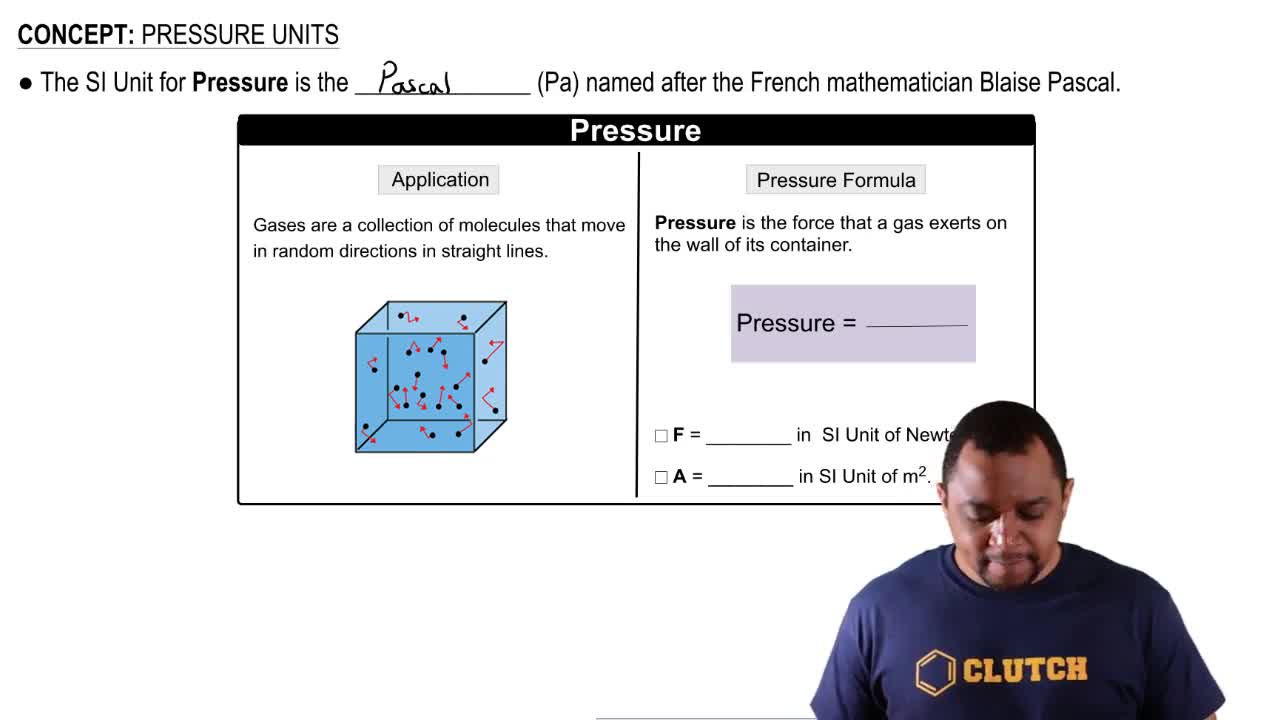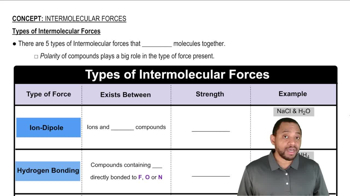(c) Which is most likely to be a gas at room temperature and ordinary atmospheric pressure, F2, Br2, K2O?
A person weighing 75 kg is standing on a threelegged stool. The stool momentarily tilts so that the entire weight is on one foot. If the contact area of each foot is 5.0 cm2, calculate the pressure exerted on the underlying surface in (c) pounds per square inch
 Verified step by step guidance
Verified step by step guidance
Verified video answer for a similar problem:
Key Concepts
Pressure

Unit Conversion

Force due to Gravity

A person weighing 75 kg is standing on a threelegged stool. The stool momentarily tilts so that the entire weight is on one foot. If the contact area of each foot is 5.0 cm2, calculate the pressure exerted on the underlying surface in (a) bars
A person weighing 75 kg is standing on a threelegged stool. The stool momentarily tilts so that the entire weight is on one foot. If the contact area of each foot is 5.0 cm2, calculate the pressure exerted on the underlying surface in (b) atmospheres
(a) How high in meters must a column of ethanol be to exert a pressure equal to that of a 100-mm column of mercury? The density of ethanol is 0.79 g/mL, whereas that of mercury is 13.6 g/mL. Assume that the density of the water is 1.00 5 1.00 3 103 kg/m3. The gravitational constant is 9.81 m/s2, and 1 Pa 5 1 kg/ms2.
(b) What pressure, in atmospheres, is exerted on the body of a diver if she is 10 m below the surface of the water when the atmospheric pressure is 100 kPa? Assume that the density of the water is 1.00 5 1.00 3 103 kg/m3. The gravitational constant is 9.81 m/s2, and 1 Pa 5 1 kg/ms2
(a) The compound 1-iodododecane is a nonvolatile liquid with a density of 1.20 g>mL. The density of mercury is 13.6 g>mL. What do you predict for the height of a barometer column based on 1-iodododecane, when the atmospheric pressure is 749 torr?
